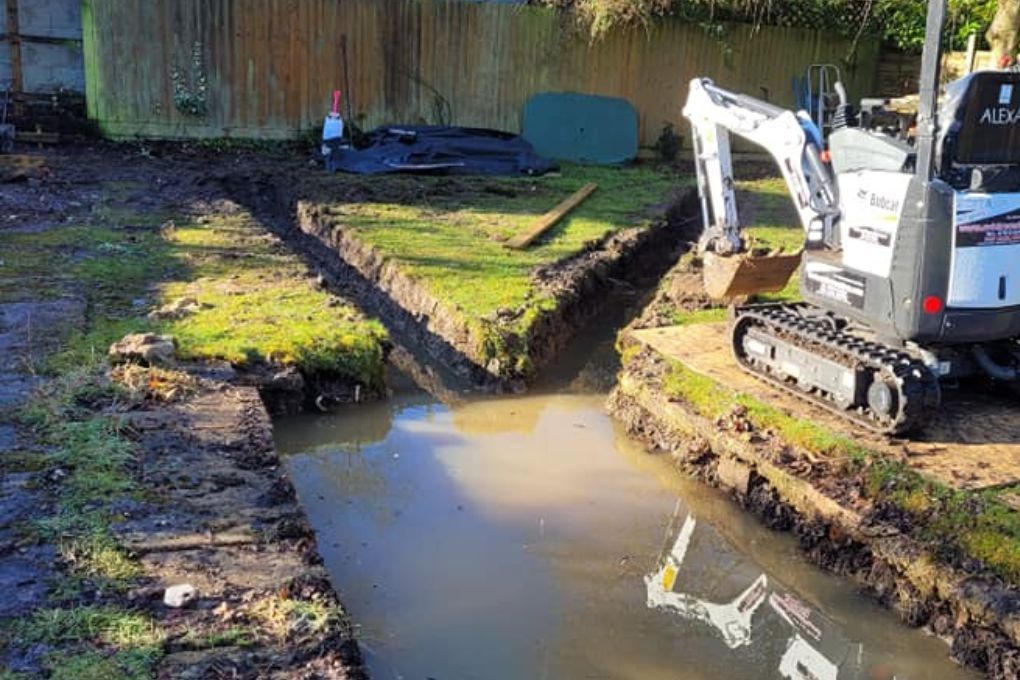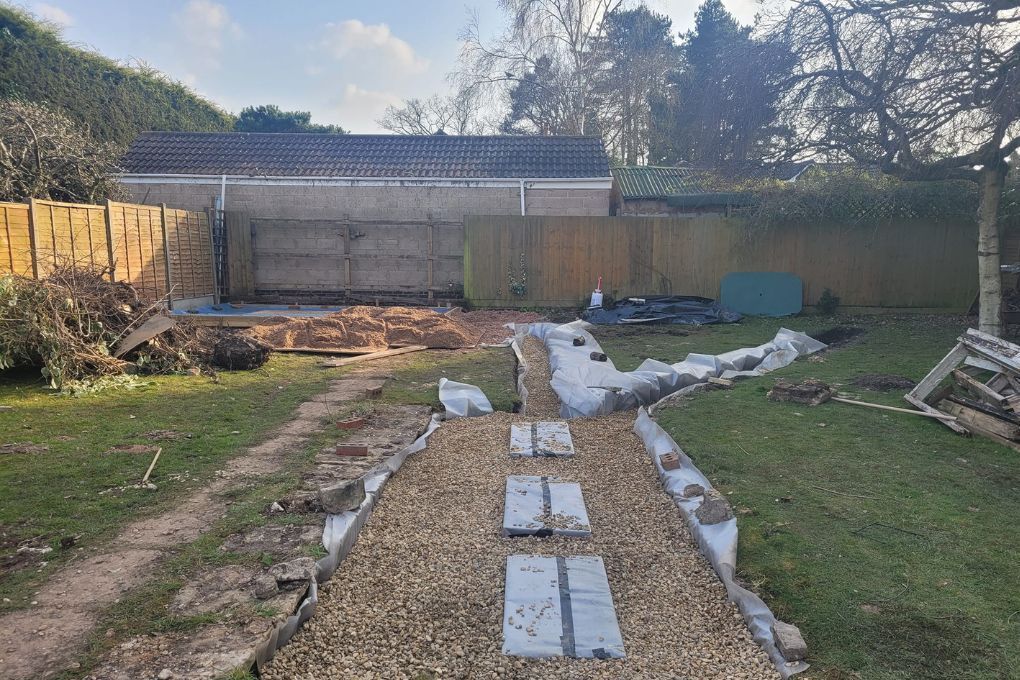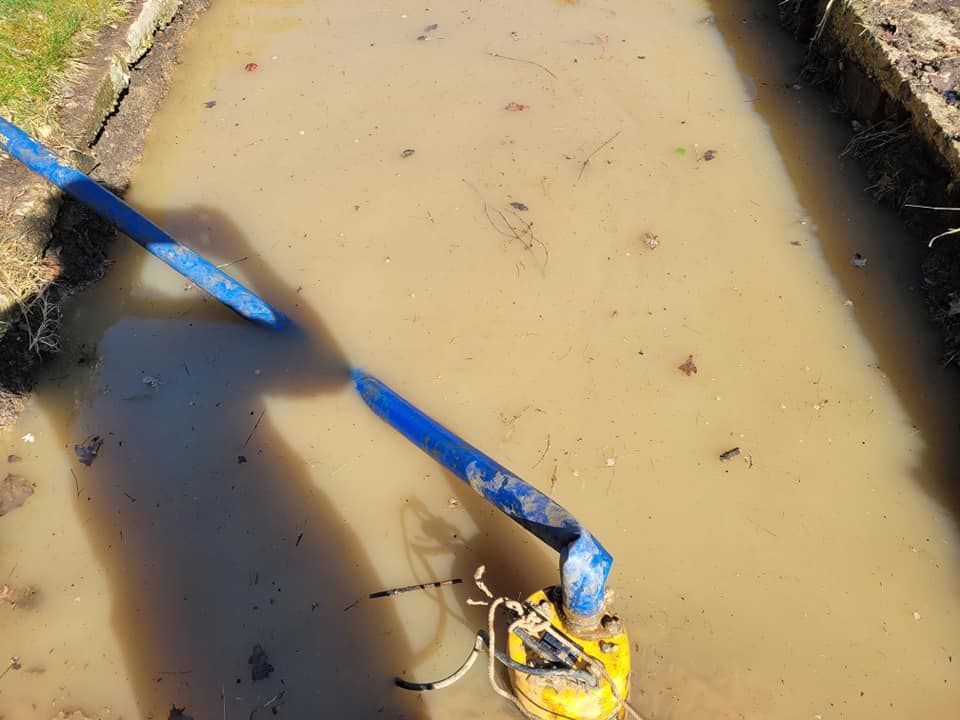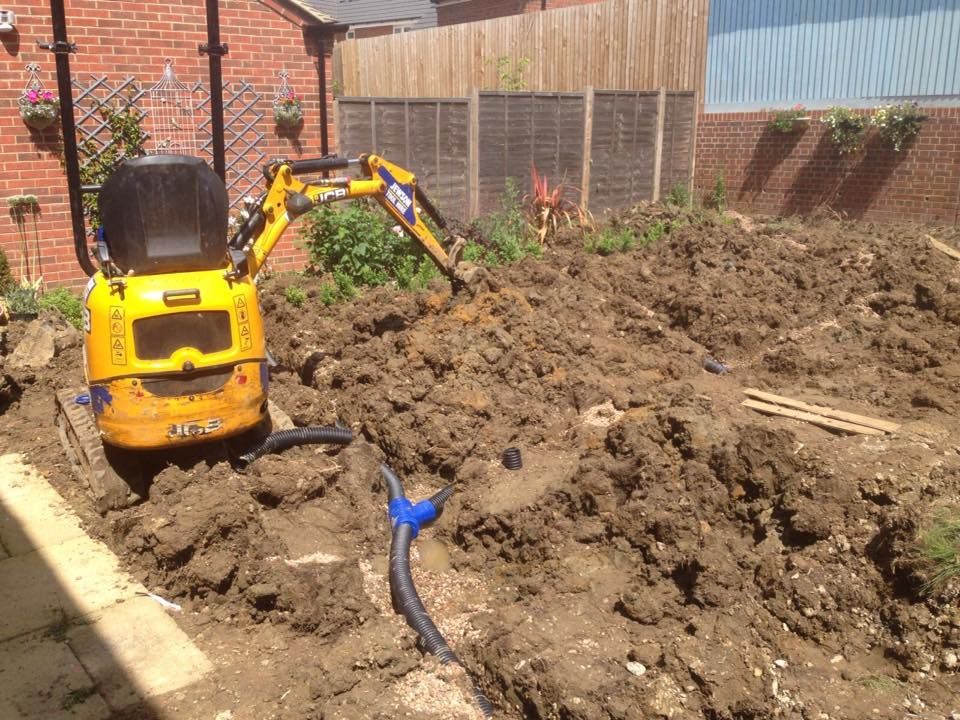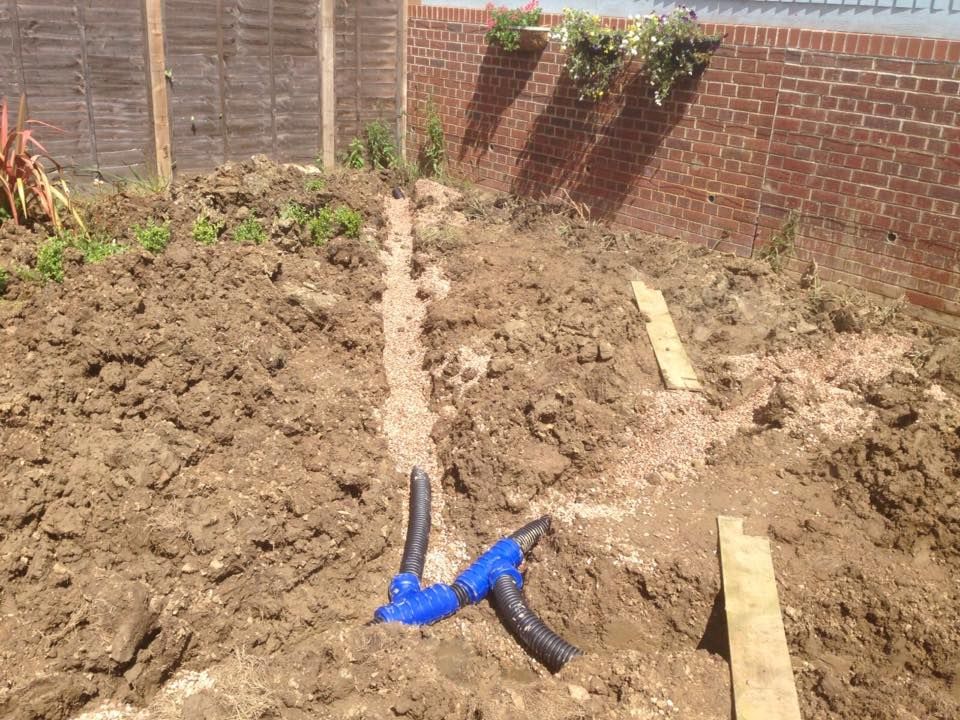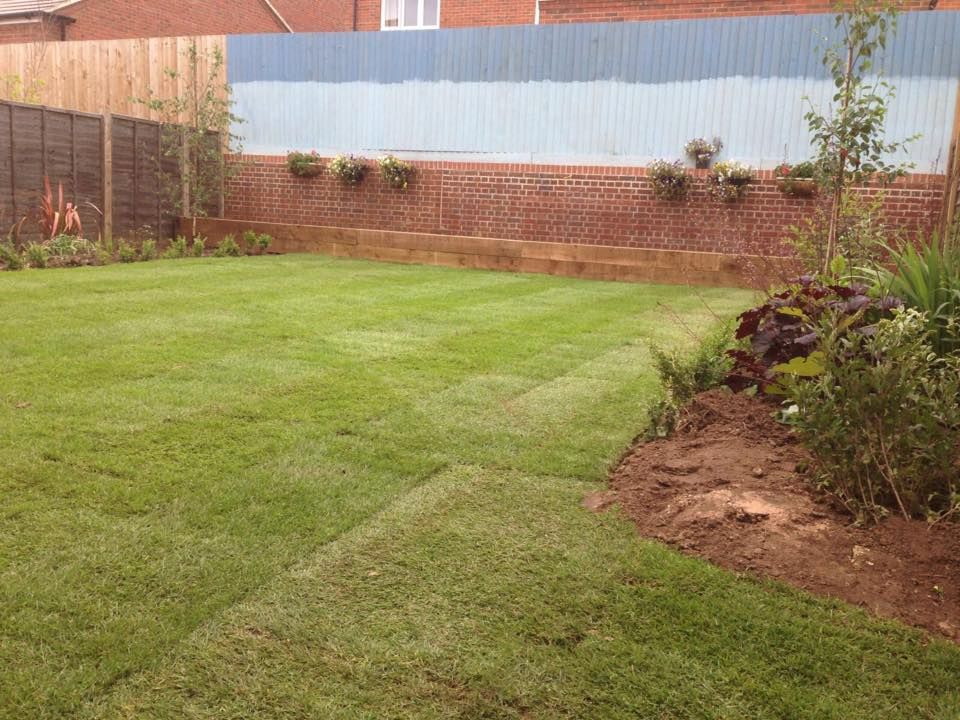Garden Drainage Solutions Bulkington
New home, new waterlogged garden?
DNA Landscapes garden drainage specialists can provide drainage solutions even for clay soil in Bulkington
INCLUDE A PHOTO START A DISCUSSION ABOUT YOUR GARDEN DRAINAGE SOLUTIONS
SEND ANYTIME 24/7
Drainage Solutions Bulkington Enquiry form
We will get back to you as soon as possible.
Please try again later.
Garden Drainage Bulkington
If you are planning to may major investments, improvement or simply re-landscape your garden then you definitely don't want to go to all that effort and expense to end up with a waterlogged garden, which can result in sinking as well as drowning and killing plants.
Excessive rainfall on top of a ground which isn't absorbing water into it quick enough means that it simply stays on top of the ground.
There are a number of possible options to deal with this issue and some may be appealing if you don't think your issue is too severe. For lawns with mild waterlogging simply aerating the ground by spiking it with a garden fork will help. Another option, rather than a solution is to install raised beds - effectively building on top of the problem with new soil that you know doesn't have drainage issues. However, that option may simply no b what you want.
To provide a more comprehensive and proper improvement to your gardens drainage will require the introduction of some purpose built ditches, designed to channel excess water away to a drain. There are a few different options which we've outlined below
When your rainwater won't go, let DNA Landscapes provide waterlogged garden solutions to let it flow away!
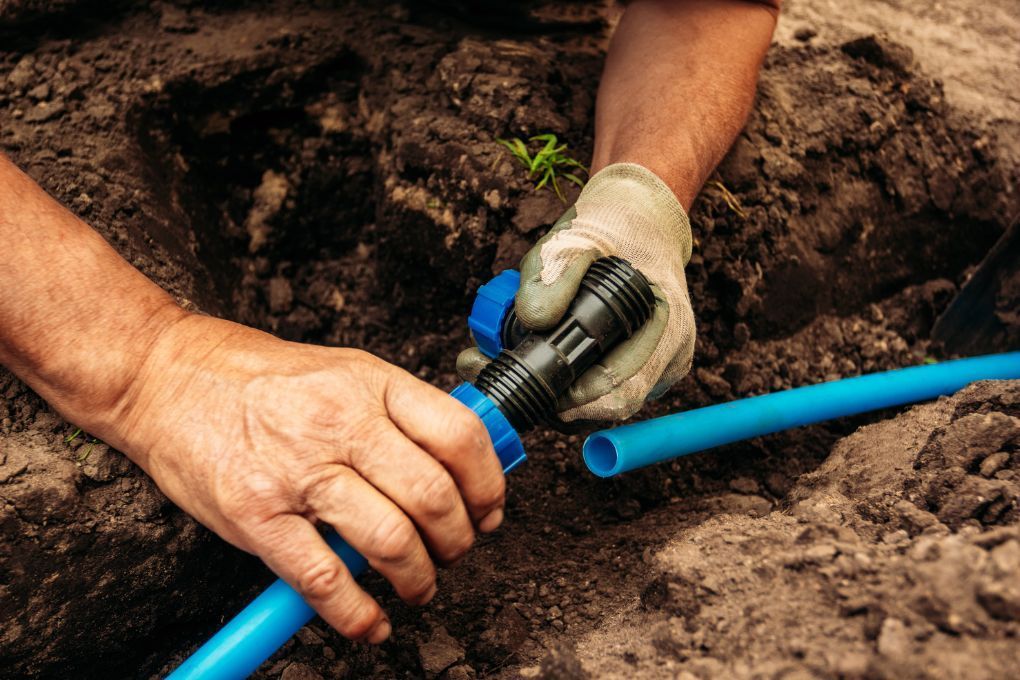
Slide title
Write your caption hereButton
Garden Drainage installers near me
Contact us any time of the day or night through our 'Get in Touch' form if you need garden drainage installers
Garden Drainage Solutions Clay Soil
Garden Drainage Specialists
The most common cause of drainage issues in a garden is caused by excessive clay soil. Clay soil severely restricts the porosity of the ground and if the level of clay in your ground is almost up to surface level you will have the most issues with water logging and man varieties of plants struggling to grow.
Whilst the addition of new soil on top of clay soil can work in sections of a garden it isn't a solution for large areas such as a lawn and will raise your ground level which you may not want.
The solutions we provide involve digging into the ground and creating purpose built pathways to take the water away to the nearest suitable drain
Garden Drainage near me
Contact us any time of the day or night through our 'Request a quote form' if you are looking for garden drainage near me
French Drains in Clay Soil
The French drain system requires creating a sloping ditch which will provide a re-directing route for excess rainwater to flow down towards a storm drain which could be a gutter or purpose built soak way at the bottom of the slope.
once the ditch has been created we will line it and add a base of small aggregate. Then on top of this we lay top perforated pipes where the water can penetrate into, from the top and then follow the gravity route of the pipe. The top of the pipe will also be covered with a membrane to only allow water to pass through and stops dirt and soil particles from clogging up the pipe's perforations.
We will determine the depth of the trench based on the soil, size of the area and current level of slope. For flatter areas the ditch will be dug to create a slope so will vary in depth being shallower at the top and deeper at the bottom.
Herringbone Drainage Solution
The basic principles of a Herringbone drainage solution follow those of a French drainage system and can also be used to collects excess water running from paths and patios.
The configuration follows a herring bone shape with one main pipe (the backbone) and then several other smaller pipes branching off from this. Gravity is used again with all of the branch pipes angled for the water collected to flow in towards the main pipe which then takes all the water downwards towards the main drain or soakaway. The number of branches can be adjusted based on the area so it a good solutions where you have a wide drainage issue such as a lawn.
Soakaway Crate Drainage Solutions
A soakaway crate solution is a way we can create a soakaway area if there is no existing drainage system at the bottom of the runaway slope. We will dig a large trench in the right are and then place soakaway grates into it. These large plastic crates are filled with a selection or stones, rocks and sand are the top of them are placed to lie just underneath the level of the soil. The surface area of the stones provide an greater evaporation area for the water and at the bottom water can be absorbed by the ground easily if this sits below the level of clay soil.
Don't worry too much about trying to choose which option would be most suitable for your garden. We'll use our landscaping knowledge to asses the area, the soil and compare this with your garden landscaping plans .
Garden Drainage Solutions near me
Contact us any time of the day or night through our 'Request a quote form' if you are looking for garden drainage solutions near me
Frequently Asked Question about Garden Drainage Solutions in Bulkington
-
What are some common garden drainage issues?
Some common garden drainage issues include poor soil structure, compacted soil, improper grading of the land, and lack of proper drainage systems. Poor soil structure, such as heavy clay soil, can prevent water from properly draining through the soil and lead to waterlogging. Compacted soil, often caused by heavy foot traffic or construction equipment, can also prevent water from infiltrating the soil. Improper grading of the land can result in water pooling in certain areas of the garden. Without proper drainage systems, such as French drains or swales, excess water may not have anywhere to go and can lead to waterlogged soil. All of these issues can have a negative impact on plant health and overall garden aesthetics.
-
Why choose DNA Landscapes to install my garden drainage?
Here at DNA Landscapes we deal with drainage solutions on an almost daily basis, from surface water run off, soil and grey water to the correct drainage system through to subsurface water management and soak aways using herringbone drainage systems. We have a solid understanding of how to disperse water in areas prone to flooding due to a high water table or poor soil conforming to all suds regulations.
-
What is the largest area DNA Landscapes has fitted a Herringbone drainage solution?
The largest herringbone drainage install was at a property in Binley Woods, an area just outside of Coventry, an area we have done extensive work in due to the heavy clay soils in the area. The garden had become waterlogged and mossy and involved approximately 100 metres of perforated drainage pipes, around 15 ton of gravel in addition to storm crates that can hold water allowing time for the water to drain, and approximately 20 tonnes of fresh soil to level up the garden.
-
What areas in Bulkington are more prone to having garden drainage issues?
New build estates are hot spots for subsurface drainage issues due to poor backfill from the house builders. The gardens are subjected to heavy traffic and heavy plant equipment during the construction process, leading to tightly compacted substrates that are made up of cheap and heavy clay soils
-
How do you come to your garden drainage ideas?
Developing garden drainage ideas can be a result of various factors. A key aspect is to observe the existing drainage and flooding issues in your garden, so capturing these with photos is helpful, as circumstances may have changed by the time we come to survey. potential solutions. We consider factors such as the type of soil in your garden, the slope of the land, and the amount of rainfall it receives as this will give us ideas to help in developing effective drainage strategies. Experimenting with different methods and materials can also help in determining what works best for your specific garden so we provide waterlogged garden solutions suitable for you.
-
What are different types of garden drainage solutions?
There are several different types of garden drainage solutions available to help prevent waterlogging and ensure proper drainage in gardens. Some common solutions include installing French drains, which are trenches filled with gravel or rock that help divert water away from the garden; creating swales or channels to direct water flow away from low-lying areas; using raised beds to improve drainage and prevent water buildup; and adding inorganic materials like sand or perlite to the soil to improve its drainage capabilities. Additionally, installing a drainage system like a dry well or a sump pump can help efficiently remove excess water from the garden. By implementing these different types of drainage solutions, gardeners can ensure their plants have the appropriate amount of water without risking water damage or root rot.
-
Are there natural ways to improve garden drainage?
Yes, there are natural ways to improve garden drainage. One method is to add organic matter, such as compost or well-rotted manure, to the soil. This helps to improve the soil structure and increase its ability to drain water effectively. Additionally, incorporating materials like sand, perlite, or vermiculite into the soil can also help to improve drainage. Building raised beds or mounding soil can provide better drainage for plants as well. Planting water-loving plants in boggy areas can help to naturally absorb excess water and improve drainage. Overall, utilising natural methods to improve garden drainage can help plants thrive and prevent waterlogged soil issues to some degree.
-
How can you improve drainage in a raised bed garden?
Improving drainage in a raised bed garden can be achieved by ensuring that the soil mix used is well-draining and contains plenty of organic matter. Adding perlite or sand can also help improve drainage. Additionally, ensuring that the raised bed has proper drainage holes at the bottom can prevent water from pooling. Avoiding overwatering and using a mulch layer on top of the soil can also help regulate moisture levels and prevent waterlogging. Finally, regularly checking the drainage situation in the raised bed and making adjustments as needed can help maintain optimal growing conditions for plants.
We’ll manage the water drainage in your garden!
Call us at 0247 512 2714 or contact us for your free quote.
Areas where garden drainage solutions are provided by DNA Landscapes:
Garden Drainage Solutions
Coventry
, Garden Drainage Solutions Balsall Common
, Garden Drainage Solutions Bedworth
, Garden Drainage Solutions Bulkington
, Garden Drainage Solutions Burbage
, Garden Drainage Solutions Cawston
, Garden Drainage Solutions Dunchurch
, Garden Drainage Solutions Binley
, Garden Drainage Solutions Ryton-on-Dunsmore
, Garden Drainage Solutions Hinckley
, Garden Drainage Solutions Kenilworth
, Garden Drainage Solutions Leamington Spa
, Garden Drainage Solutions Long Itchington
, Garden Drainage Solutions Long Lawford
, Garden Drainage Solutions Nuneaton
, Garden Drainage Solutions Warwick
, Garden Drainage Solutions Rugby
, Garden Drainage Solutions Southam
,

18 Wyke Road, Coventry, CV2 3DU, United Kingdom
Business Hours
- Mon - Fri
- -
- Saturday
- -
- Sunday
- Closed
© DNA LANDSCAPES

